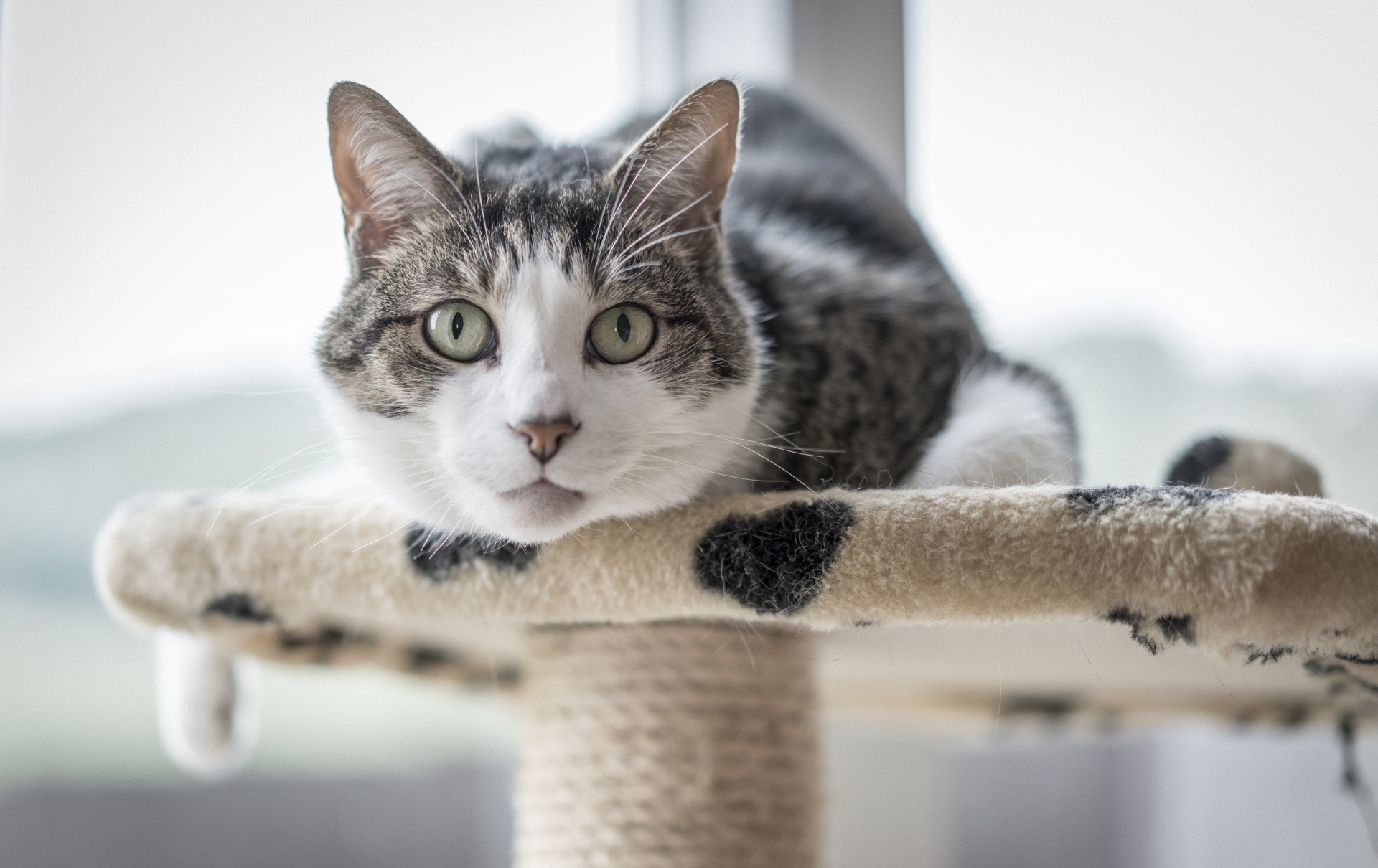A Scent-sitive Subject: Essential Oil Diffusers and Your Cat
Essential oils are often presented as a naturalistic approach to personal care and home fragrance. However, just because these oils are derived from plants doesn’t make them healthy, or even safe, for your cat.

Dr. Murl Bailey, a professor at the Texas A&M College of Veterinary Medicine & Biomedical Sciences (CVMBS), advises pet owners to use essential oils with caution.
When essential oils are used in fragrance diffusers, the oils are widely distributed within a room. Because many of the oils commonly purchased in stores can be toxic to cats, if a cat breathes in a harmful oil, it may cause respiratory irritation.
“Diffused oils are very dangerous, as the oils are inhaled,” Bailey said. “Not only are these oil droplets dangerous themselves, but the inhalation of these oils can cause a foreign body pneumonia in cats.”
Symptoms of respiratory irritation include a watery nose and eyes, drooling, vomiting, and difficulty breathing. In cats, difficulty breathing may be mistaken for the animal trying to expel a hairball. Difficulty breathing can be distinguished by the cat crouching low to the ground with little abdominal movement and no hairball production.
If a cat owner suspects that their pet is in distress, they should move their cat to fresh air immediately. If the cat does not quickly recover, the owner should seek emergency veterinary care. For any instances of poisoning, owners can also call the Pet Poison Helpline at (855) 764-7661 or the ASPCA Animal Poison Control Center at (888) 426-4435.
Essential oil diffusers also pose the hazard of tipping over. If this happens, there is the possibility that a cat might ingest spilled oils, which Bailey warns against.
“Essential oils should never be given by mouth or in the animal’s food,” Bailey said. “Oral ingestion can cause vomiting, diarrhea, and central nervous system depression, which can cause symptoms such as decreased heart and breathing rate. Seizures are also possible from large doses.”
Some diffusers, which act by aerosolizing the oil, release micro-droplets into the air that may collect on the fur of a pet cat. When the cat grooms itself, the oil may be ingested and the cat may suffer the above consequences.
Though cat owners should consult with their veterinarian before introducing new products to their pet’s environment, Bailey provides a list of more common oils that are toxic to pets:
- Basil
- Bergamot
- Bitter almond
- Cinnamon
- Clove Leaf
- Eucalyptus
- Geranium
- Juniper
- Lavender
- Lemon
- Lemongrass
- Lime
- Mint (Including wintergreen, spearmint, and peppermint)
- Myrrh
- Orange
- Pine
- Rose
- Rosemary
- Sandalwood
- Sassafras
- Tarragon
- Tea tree
- Thyme
- Wormwood
- Ylang ylang
Other less common essential oils that are also toxic include Armoise, Bay leaf (W. Indian), Birch (sweet), Boldo leaf, Buchu, Calamus, Clary Sage, Cornmint, Horseradish, Japanese Yew, Hyssop Lanyana, Mustard, Oregano, Pennyroyal (N. Am.), Pennyroyal (Eur.), Sassafras (Brazilian), Savin, Savory (Summer), Southernwood, Spruce, Tansy, Thuja, Tree wormwood, large wormwood, Western Red Cedar, and Wormseed.
These products offer a natural method of home fragrance, but what works for you may not always be best for your pet. When using essential oils in the home, a cautious approach is best. As always, pet owners should consult with their veterinarian about any hesitancy they have before using these products to ensure that they are acting in the best interest of their pet.
Pet Talk is a service of the College of Veterinary Medicine & Biomedical Sciences, Texas A&M University. Stories can be viewed on the web at vetmed.tamu.edu/pet-talk. Suggestions for future topics may be directed to editor@cvm.tamu.edu.


